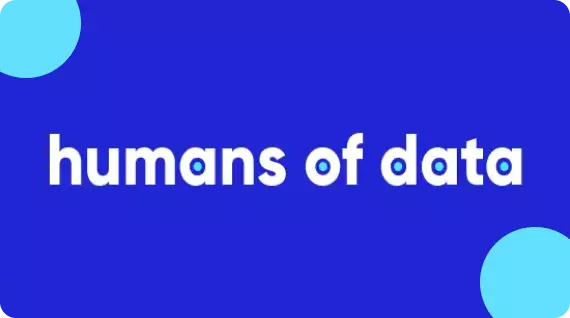Data Governance & Business Intelligence: Why Their Integration Matters and How It is Crucial for Business Success?

Share this article
Data governance and business intelligence (BI) are two crucial aspects that drive the effective management and utilization of data within organizations. The fusion of data governance business intelligence strategies ensures data quality, regulatory compliance, efficiency, and trust in data management and analytics processes.
When integrated with data governance tools, BI tools can ensure that the data fed into them is clean, reliable, and consistent. This results in more accurate and trustworthy insights, leading to better decision-making.
Modern data problems require modern solutions - Try Atlan, the data catalog of choice for forward-looking data teams! 👉 Book your demo today
In this article, we will explore the importance of integrating data governance and business intelligence tools and discuss the key factors to consider when choosing a solution.
Table of contents #
- What is data governance in business intelligence?
- What is the role of data governance in business intelligence?
- How do data governance tools integrate with business intelligence tools?
- Integration of data governance & business intelligence: Explained with an example
- Things to consider before choosing a data governance solution that integrates with BI tools
- Tracking data from its origin through a data governance tool and into a BI tool
- How Atlan integrates with BI tools for effective data governance?
- Rounding it all up
- Related reads
What is data governance in business intelligence? #
Data governance in business intelligence refers to the overall management of the availability, usability, integrity, and security of the data employed in an enterprise. The goal of data governance is to ensure the data is reliable, consistent, accessible, and secure. This becomes particularly important in business intelligence (BI) because BI relies heavily on the quality and context of the data.
Here are the key aspects of data governance in BI:
1. Availability #
Ensuring that data is available when it’s needed is a crucial part of data governance. This involves maintaining and managing databases, servers, and other infrastructure, and implementing robust data recovery and business continuity plans.
2. Usability #
Data needs to be well-organized and easy to use for it to be valuable. This includes creating clear data definitions, maintaining a business glossary, and managing metadata effectively.
3. Integrity #
Ensuring the accuracy and consistency of data is critical for effective decision making in BI. This involves establishing and enforcing data quality standards and validation rules.
4. Security #
Protecting data from unauthorized access and ensuring compliance with laws and regulations is a key part of data governance. This includes managing access rights, protecting sensitive data, and implementing data privacy measures.
What is the role of data governance in business intelligence? #
Data governance is critical for the effective and efficient use of business intelligence tools for a variety of reasons:
- Data quality
- Regulatory compliance
- Efficiency
- Trust
Let us learn a bit more about the above reasons one by one:
1. Data quality #
Data governance ensures the data used in BI tools is accurate and reliable. This means that the insights generated by these tools are more likely to be correct, leading to better decision-making.
2. Regulatory compliance #
In healthcare, adhering to regulations like HIPAA is critical. Data governance helps manage and protect sensitive patient data, ensuring it’s used appropriately and kept secure.
3. Efficiency #
By managing data effectively and reducing redundancy, data governance can improve the efficiency of your BI processes. This can lead to cost savings and quicker insight generation.
4. Trust #
With good data governance, users can trust the data they’re working with, leading to increased confidence in the insights generated by BI tools.
All these points ensure that using data governance tools is very effective in standardizing your data.
How do data governance tools integrate with business intelligence tools? #
Data governance tools help manage, improve, and protect the overall quality of the organization’s data. These tools create a framework for data quality, data management, business process management, and risk management surrounding the handling of data in an organization.
When integrated with BI tools, the governance solutions can ensure that the data fed into these tools are accurate, reliable, and consistent. This is achieved through a variety of methods, such as data cleansing, data validation, data transformation, and maintaining a data catalog.
For instance, data governance tools can help ensure that data from different sources is standardized before it’s fed into BI tools. It reduces discrepancies and errors in analysis. The tools also help track data lineage, allowing you to see data sources, how it’s used, and how it changes over time. This can significantly enhance the trustworthiness of your BI insights.
Integration of data governance & business intelligence: Explained with an example #
Data governance tools primarily work to ensure data accuracy, security, privacy, and compliance. They achieve these goals through various functionalities, such as data cataloging, data lineage, data quality management, data security & privacy, and more.
Here’s how these functionalities interact with BI tools:
- Data cataloging
- Data lineage
- Data quality management
- Data security & privacy
1. Data cataloging #
A data governance tool creates a metadata repository, also known as a data catalog, which includes details about all data assets across the organization. It can include technical metadata (like data type, data length, etc.), business metadata (like business definitions), and operational metadata (like data lineage and data profiling statistics).
When a data governance tool integrates with a BI tool, it means that this metadata repository can be accessed and used by the BI tool. For instance, when a user in a BI tool is creating a new report, they can look up the data catalog to understand which data to use, what the data means, its quality, etc. This helps them make an informed decision about the data they’re using.
2. Data lineage #
Data lineage tracks the life cycle of data, from its origins through its transformations to its endpoint. When integrated with a BI tool, users can trace back the data used in their reports or dashboards to its original source, helping to identify any issues or inconsistencies.
If there’s a sudden change in a KPI, for instance, data lineage can help track down whether the change was due to a shift in business operations or an error in data transformation.
3. Data quality management #
Data governance tools also work to continuously monitor and improve the quality of data. They can validate the data, standardize it, de-duplicate it, and more. When integrated with a BI tool, it means that the data that are being used for analysis are clean and reliable. This improves the accuracy and reliability of the BI reports and dashboards.
4. Data security & privacy #
Data governance tools control who can access what data. They can enforce rules and roles to ensure that sensitive data is only accessible by authorized personnel. When integrated with a BI tool, it means that the data within the BI tool is also subject to these rules and roles.
For instance, a doctor might be able to see all patient details, but a nurse might only be able to see a subset of that data. These rules would be enforced no matter where the data is accessed from, be it the original database, the data governance tool, or the BI tool.
A practical example #
When a BI tool is merged with a data governance tool, users can tap into a trustworthy data catalog, ensuring that they employ credible and accurate data for crafting reports. The data lineage functionality assists in tracing data origins, thereby validating its authenticity and pinpointing potential discrepancies. As the report is formulated, data governance continues to monitor and uphold data quality and security, ensuring continued compliance and reliability.
-
You’d start by accessing the data catalog to understand what data is available for your report. The catalog would provide you with details on the various data points you could include, like patient feedback scores, patient demographics, clinic details, etc. It would also provide you with details on the quality of this data, so you know you’re using reliable data.
-
Next, you might use the data lineage functionality to understand where this data came from. This would give you confidence that the data hasn’t been misinterpreted or transformed incorrectly during its journey to the BI tool.
-
You’d then create your report in the BI tool, knowing that the data you’re using is accurate, reliable, and secure. The data security and privacy rules enforced by the data governance tool would ensure that you’re only able to access data you’re authorized to see.
-
Finally, once your report is created, the data governance tool would continue to monitor the data. If there are any changes in the underlying data, it would update the data catalog and maintain data quality. If there’s a sudden drop in patient satisfaction, for instance, and you suspect a data quality issue, the data lineage functionality can help you trace back the data to its source and identify where the problem lies.
-
On the security front, even if the report contains sensitive data like patient health information, you can be assured that this information is only accessible by authorized personnel. The data governance tool would enforce strict access controls within the BI tool, ensuring compliance with regulations like HIPAA.
Integrating a data governance tool with a BI tool provides users with trustworthy, high-quality data for their analyses. It ensures that the data is understood, its origins are traceable, its quality is maintained, and it’s only accessible by authorized users. This integration is crucial for accurate, reliable, and secure BI reporting.
6 Things to consider before choosing a data governance solution that integrates with BI tools #
There are a few points to keep in mind before implementing a data governance solution that is integrated with your business intelligence toolset:
- Compatibility
- Scalability
- Security
- Ease of use
- Vendor support
- Regulatory compliance
Let us look into each of these factors one by one.
1. Compatibility #
Ensure the data governance solution is compatible with your existing data infrastructure and BI tools.
2. Scalability #
As your organization grows, so will your data. Your chosen solution should be able to handle this growth.
3. Security #
Given the sensitivity of healthcare data, the solution should have robust security measures to protect data at rest and in transit.
4. Ease of use #
The solution should be user-friendly, enabling your team to easily implement and maintain your data governance strategy.
5. Vendor support #
Choose a solution with strong vendor support for troubleshooting, upgrades, and adapting to changing needs.
6. Regulatory compliance #
The solution should support compliance with all relevant regulations for data handling and privacy.
Now, let us move on to understand how data governance tools integrate with your BI tools.
Tracking data from its origin through a data governance tool and into a BI tool #
To understand how data governance tools integrate with BI tools, it’s important to understand how data flows from the original data sources through a data governance tool and into a BI tool.
The flow of data can be broken down into three main steps:
- Data sources,
- Data governance tool,
- BI tool
In this section, we will explore each step in detail and explain how they interact with one another.
+----------------+ +---------------------+ +-------------+
| Data Sources | ---> | Data Governance Tool| ---> | BI Tools |
| (Databases, | | (Data Catalog, | | (Analytics, |
| Warehouses, | | Data Lineage, | | Reporting, |
| etc.) | | Data Quality, | | Dashboards)|
| | | Security & Privacy)| | |
+----------------+ +---------------------+ +-------------+
Let us look into each step in detail:
1. Data sources #
These are the sources of your data. They could be databases, data warehouses, CRM systems, ERP systems, etc. The data from these sources are raw and unprocessed.
2. Data governance tool #
The data from your sources go into the data governance tool. Here, it’s cataloged, its lineage is traced, its quality is managed, and security and privacy measures are applied. The tool ensures that the data is accurate, reliable, and secure.
3. BI tools #
The processed data from the data governance tool is then fed into your BI tools. These could include analytics platforms, reporting tools, dashboard tools, etc. These tools use the data to generate insights, which can then be used to inform decision-making.
This flow is relevant for any organization that uses data to drive decision-making, not just those in the healthcare industry. The specific data sources and BI tools might vary from organization to organization, but the overall flow remains the same.
The above diagram is quite simplified. However, in reality, data might flow through various other systems (like ETL tools, data lakes, etc.) before it reaches the BI tools. The specifics would depend on your organization’s data architecture.
How Atlan integrates with BI tools for effective data governance? #
Atlan is a software company that provides a modern take on data governance. Their data governance solution aligns well with the evolution of technology and organizational culture and integrates with various BI tools.
They provide a user-friendly and effective solution that aligns with the evolving needs and expectations of today’s data teams.
Atlan provides a modern take on data governance that aligns well with the evolution of technology and organizational culture. When you think about integrating Atlan as a data governance tool with your BI tool, consider the key principles that Atlan believes data governance should embody.
The key principles include:
- Data analytics and governance
- Decentralized community-led approach
- Integration into daily workflows
Let us look into each of the above principles in detail:
1. Data and analytics governance #
Atlan recognizes that governance should extend beyond raw data to include all forms of data assets, including dashboards, codes, and models. This means when integrating with your BI tool, Atlan would help govern your raw data and the resulting reports, dashboards, and analytics models you create with your BI tool.
2. Decentralized, community-led approach #
Instead of a top-down, centralized approach, Atlan believes in a decentralized, practitioner-led approach to data governance. This means your BI tool users can be active participants in the data governance process. They can contribute to the data catalog, help maintain data quality, and play an active role in the data governance community.
3. Integration into daily workflows #
Atlan believes that data governance should be an integral part of the daily workflows of data practitioners, not an afterthought. This means that when integrated with your BI tool, Atlan would fit into your users’ daily tasks, making data governance a natural part of their work, rather than an extra burden.
Integrating Atlan with BI tools introduces a modern, user-friendly data governance solution, aligning with the distinctive needs of contemporary data teams. The integration ensures elevated collaboration, empowerment of data teams, and fosters a culture of data democratization and shared responsibility for data quality and security.
Rounding it all up #
In conclusion, integrating data governance and business intelligence (BI), tools is crucial for ensuring accurate, reliable, and secure data for analyses. Data governance tools help manage, improve, and protect data quality. So, when they’re integrated with BI tools, they ensure data accuracy, reliability, and consistency.
When looking for a data governance solution, it’s important to consider factors such as compatibility, scalability, security, ease of use, vendor support, and regulatory compliance.
If you are evaluating and looking to deploy best-in-class data access governance for your data ecosystem without compromising on data democratization, do give Atlan a spin.
Data governance & business intelligence: Related reads #
- How to Integrate Data Catalog With BI tools? Steps, Factors & More
- Traditional BI vs Self-Serve BI: Which One Suits You the Most?
- BI & Metadata Management: The Rhino and the Oxpecker
- What is Data Governance? Its Importance, Principles & How to Get Started?
- Key Objectives of Data Governance : How Should You Think About Them?
- Data Governance Framework — Examples, Templates, Standards, Best Practices & How to Create One?
- Data Governance and Compliance: Act of Checks & Balances
- How to implement data governance? Steps, Prerequisites, Essential Factors & Business Case
- How to Improve Data Governance? Steps, Tips & Template
- 7 Steps to Simplify Data Governance for Your Entire Organization
- Snowflake Data Governance — Features, Frameworks & Best Practices
- Automated Data Governance: How Does It Help You Manage Access, Security & More at Scale?
- Enterprise Data Governance — Basics, Strategy, Key Challenges, Benefits & Best Practices
- Data Governance in Manufacturing: Steps, Challenges, and Practical Examples
- Data Governance in Retail: Best Practices, Challenges, and Viable Solutions
- Data Governance in Insurance: Why is it Important and How it Drives Positive Business Outcomes
Share this article









